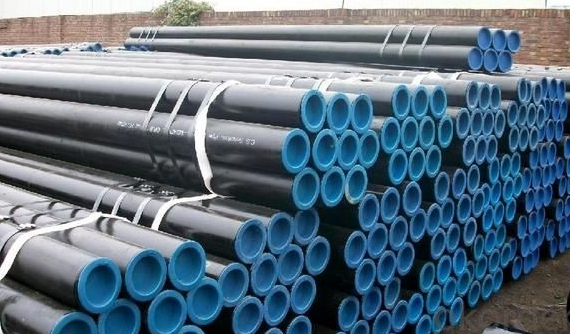
Quality Requirements of Seamless Steel Pipes in Production
1. Chemical composition
The chemical composition of steel is one of the most important factors affecting the performance of seamless steel pipes, and it is also the main basis for formulating pipe rolling process parameters and steel pipe heat treatment process parameters.
a. Alloying elements: intentionally added, according to the purpose.
b. Residual elements: brought in by steelmaking, properly controlled.
c. Harmful elements: strictly control (As, Sn, Sb, Bi, Pb), gas (N, H, O)
In order to improve the uniformity of the chemical composition of the steel and the purity of the steel, reduce the non-metallic inclusions of the tube blank and improve its distribution, the external refining equipment is often used to refine the molten steel, and even the electroslag furnace is used to reshape the tube blank. Smelting and refining.

2. Dimensional accuracy and shape
The geometric dimensions of seamless steel pipes mainly include the outer diameter, wall thickness, ellipticity, length, curvature, pipe end face cut, bevel angle and blunt edges, and cross-sectional dimensions of special-shaped steel pipes.
a. The accuracy of the outer diameter of the steel pipe: depends on the method of sizing (reducing) the diameter, the operation of the equipment, the process system, etc.
Allowable deviation of outer diameter δ=(D-Di)/Di ×100% D: Maximum or minimum outer diameter (mm)
b. Steel pipe wall thickness accuracy: It is related to the heating quality of the tube blank, the process design parameters and adjustment parameters of each deformation process, the quality of the tool and the quality of lubrication, etc.
Allowable deviation of wall thickness: ρ=(S-Si)/Si×100% S: the maximum or minimum wall thickness on the cross section (mm)
c. Ovality of steel pipe: indicates the degree of out-of-roundness of the steel pipe.
d. Steel tube length: normal length, fixed (double) length, length tolerance.
e. Steel pipe curvature: indicates the curvature of the steel pipe: the curvature per meter of the steel pipe length and the curvature of the steel pipe full length.
f. Steel pipe end face cut slope: It indicates the degree of inclination between the steel pipe end face and the steel pipe cross section.
g. The bevel angle and blunt edge of the steel pipe end face.
3. Surface quality
The standard stipulates the requirements of "smooth and clean surface" of seamless steel pipes.
Common defects are: cracks, hair lines, internal folds, external folds, crushing, internal straights, external straights, separation, scars, pits, convex hulls, pits (pits), scratches (abrasions) , Inner spiral, outer spiral, blue line, concave correction, roll printing, etc., are mainly divided into two categories.
a. Dangerous defects: cracks, internal folds, external folds, crushing, delamination, scarring, dents, convex hulls, etc.
b. General defects: pits, blue lines, scratches, bruises, slight inner and outer straights, roller marks, etc.
Causes:
① Due to surface defects or internal defects of the tube blank.
② Produced in the production process, such as incorrect design of rolling process parameters, unsmooth mold surface, poor lubrication conditions, unreasonable pass design and adjustment.
③ In the process of heating rolling, heat treatment and straightening of the tube billet (steel tube), if the heating temperature is not properly controlled, the deformation is not uniform, the heating and cooling rate is unreasonable, or the straightening deformation is too large to produce excessive residual stress, then It may also cause surface cracks in the steel pipe.
4. Physical and chemical properties
Including the mechanical properties at room temperature and the mechanical properties at a certain temperature (thermal strength and low temperature properties) and corrosion resistance (such as oxidation resistance, water corrosion resistance, acid and alkali resistance, etc.). Generally, it depends on the chemical composition and structure of the steel. Performance and purity of steel and heat treatment method of steel. In some cases, the rolling temperature and degree of deformation of the steel pipe will also affect the performance of the steel pipe.
5. Process performance
Including the flaring, flattening, crimping, bending, ring drawing and welding performance of steel pipes.
6. Metallographic organization
Including the low-magnification (macro) and high-magnification (micro) of the steel pipe.
7. Special requirements
Requirements other than the standards put forward by users when using steel pipes. Such as: contract attachments, technical agreements.
As a seamless tube manufacturer, Permanent Steel Manufacturing Co.,Ltd specializes in the production and supply of seamless steel pipes: thin-wall/thick-wall seamless pipes, precision seamless pipes, small-diameter seamless pipes, providing various specifications and materials, large inventory, rich experience, and can be provided customized service according to customer requirements.


